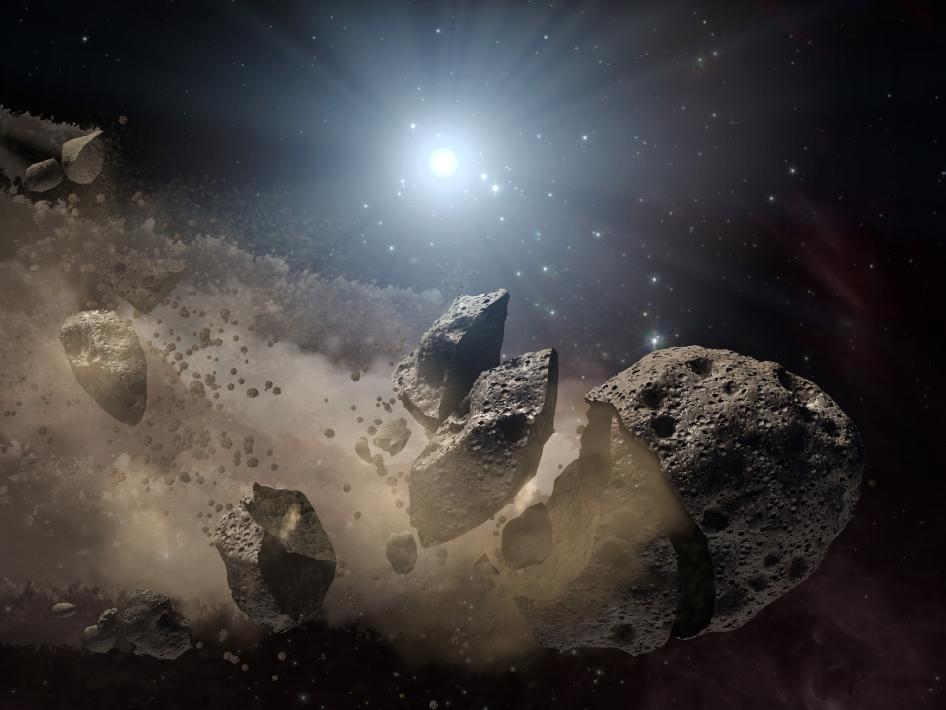66 million years ago, an asteroid that was at least eleven kilometers across slammed into the Earth. The impact caused 76% of the species alive at the time to go extinct, including all of the dinosaurs except for birds. It’s likely the asteroid caused a one and half kilometer high tidal wave, sent debris into the atmosphere that blocked the sun for up to ten years, ignited global wildfires, and triggered earthquakes and volcanoes across the planet.

Here’s where in Mexico the Chicxulub Crater is located. Source: NASA/JPL-Caltech, modified by David Fuchs, public domain
It also left behind a crater, called the Chicxulub crater, that is about 150 kilometers across and 20 kilometers deep, centered just off the shore of the Yucatan Peninsula in Mexico. Scientists have been studying the Chicxulub crater since it was discovered in 1978 to learn how the asteroid impact that formed it changed this planet and caused the extinction of so many species.
In 2016, researchers collected an 800-meter core sample from the Chicxulub crater. In that sample, they observed 130 meters of impact melt rock that had formed due to the immense heat and pressure of the impact. The rocks above the impact melt layer contained microscopic particles of whatever material was present in the water where they first formed.
Among these particles are organic molecules that are unique to certain types of microbes, called biomarkers. Recently, a team of researchers decided to identify the biomarkers in the sedimentary rocks in the Chicxulub crater core sample to determine what types of microbes lived in the crater. This information would help the researchers understand how life responded to the asteroid impact.
The researchers started with samples of up to 20 grams of material from each of the rock types in the core sample. They removed contaminants from the surface of the samples by subjecting them to ultrasonic baths in water and organic solvents. Then, they powdered the samples and used solvents to extract the organic materials from the rocks. To figure out what chemical compounds were in the samples, the researchers used mass spectrometry, a technique which identifies molecules or atoms according to their size.
By identifying biomarkers in sedimentary rock from the impact crater core, the researchers saw how the microbial communities in the Chicxulub crater changed over time. In the layer of sediment that formed when a tidal wave swept ocean water into the crater, they found biomarkers from a wide variety of microbes from different ocean and land environments. They concluded these biomarkers were from organisms that were either destroyed by the asteroid impact, or carried to the crater by the tidal wave.
The researchers identified some biomarkers from cyanobacteria that lived in the crater about 30,000 years after the asteroid impact. Cyanobacteria do photosynthesis and make oxygen, like plants, but are microscopic like bacteria. Although the cyanobacteria biomarkers showed that some photosynthesis was occurring in the crater, most of the biomarkers were from microbes in low oxygen or high sulfur environments.
In the rocks that formed 200,000 years after the Chicxulub crater formed, scientists found biomarkers for 100 times as much cyanobacteria in the crater as there had been 30,000 years after the impact. They also found biomarkers indicating that other microbes were living in the low oxygen and high sulfur environments deep in the crater.
Biomarkers indicated that cyanobacteria went through periods of decline in the time between 200,000 and 4 million years after the impact, when essential nutrients became more scarce. After looking at all of the biomarkers in the samples, the researchers concluded that microbial life in the Chicxulub crater was impacted by continuing environmental shifts for 4 million years after the asteroid impact that caused dinosaurs to go extinct.


